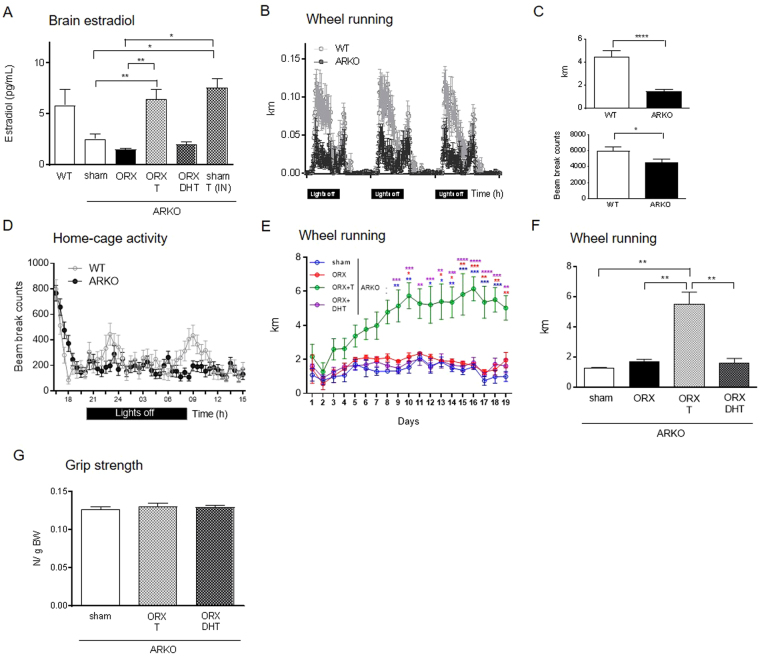Figure 4.
Testosterone restores wheel running activity even in the absence of AR-signaling. (A) Concentration of E2 in brain homogenates in WT and ARKO mice after both ORX and hormone replacement or intranasal treatment with T. Circadian patterns of wheel running (B) and average distance run per day (C, upper panel) in trained ARKO and WT mice. Ambulatory movement beam breaks over 23 h (D) and total cumulative ambulatory activity during the night (C, lower panel). Time course of daily wheel running activity over a period of 19 days (E) and average distance run per day after two weeks of training (F) in ARKO mice after ORX and hormone replacement. Note that the color of the stars in (E) represents the specific comparisons. Total-limb maximal grip strength (G) in sham, ARKO + T and ARKO + DHT mice. Data in panel A, F and G were analyzed using one-way ANOVA and those in panels C and E were analyzed by Student t-test and two-way repeated measures ANOVA, respectively. Data are presented as mean ± SEM. In (A) n = 3–14 animals per group; in (B and C) (upper panel), n = 18 animals per group; in C (lower panel) and D, n = 17–21 animals per group; in (E and F), n = 3–6 animals per group; in G n = 5–8 animals per group. Statistical significance levels: *, **, ***, ****P < 0.05, 0.01, 0.001 and 0.0001.

